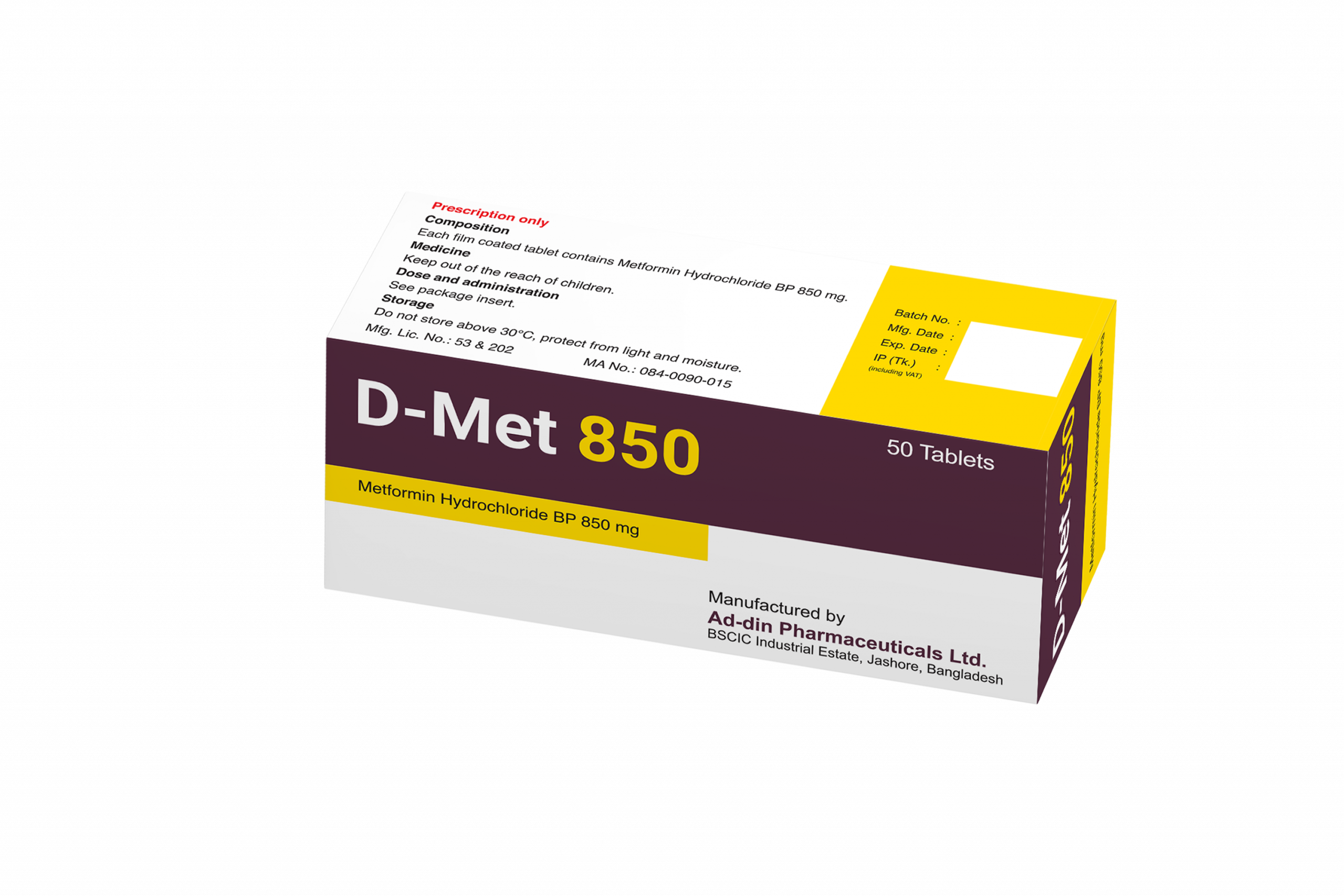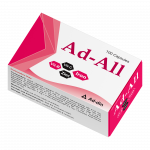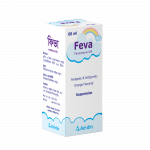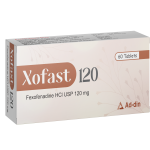Composition
Each film-coated tablet contains Metformin Hydrochloride BP 850 mg.
Pharmacology
Metformin is an antihyperglycemic agent that improves glucose tolerance in patients with type 2 diabetes, lowering both basal and postprandial plasma glucose. Metformin decreases hepatic glucose production, decreases intestinal absorption of glucose, and improves insulin sensitivity by increasing peripheral glucose uptake and utilization. Unlike sulphonylureas, Metformin does not produce hypoglycemia in either patients with type 2 diabetes or normal subjects and does not cause hyperinsulinemia.
Indication
D-Met (Metformin Hydrochloride) is indicated as an adjunct to diet and exercise to improve glycemic control in children and adults with type 2 diabetes mellitus.
Dosage and Administration
The dosage of D-Met (Metformin Hydrochloride) must be individualized based on both effectiveness and tolerance, while not exceeding the maximum recommended daily dose. The maximum recommended daily dose of D-Met is 2550 mg in adults and 2000 mg in pediatric patients (10-16 years of age). D-Met should be given in divided doses with meals. D-Met should be started at a low dose, with gradual dose escalation, both to reduce gastrointestinal side effects and to permit the identification of the minimum dose required for adequate glycemic control of the patient.
Adults: The usual starting dose of D-Met is 500 mg twice a day or 850 mg once a day, given with meals. Dosage increases should be made in increments of 500 mg weekly or 850 mg every 2 weeks, up to a total of 2000 mg per day, given in divided doses. Patients can also be titrated from 500 mg twice a day to 850 mg twice a day after 2 weeks. Doses above 2000 mg may be better tolerated given three times a day with meals.
Pediatrics: The usual starting dose of D-Met is 500 mg twice a day, given with meals. Dosage increases should be made in increments of 500 mg weekly up to a maximum of 2000 mg per day, given in divided doses. The safety and effectiveness of D-Met among pediatric patients below 10 years have not been established yet.
Use in Pregnancy & Lactation
FDA Pregnancy Category B. Most experts recommend that insulin should be used during pregnancy to maintain blood glucose levels as close to normal as possible. Both Metformin immediate and extended-release tablets should not be used during pregnancy unless needed.
Because the potential for hypoglycemia in nursing infants may exist, a decision should be made whether to discontinue nursing or discontinue the drug, taking into account the importance of the drug to the mother.
Contraindication
Metformin is contraindicated in patients with
1. Renal disease or renal dysfunction (e.g., as suggested by serum creatinine levels > 1.5 mg/dL [males], > 1.4 mg/dL [females], or abnormal creatinine clearance).
2. Known hypersensitivity to Metformin Hydrochloride.
3. Acute or chronic metabolic acidosis, including diabetic ketoacidosis, with or without coma.
Warnings & Precaution
Lactic acidosis can occur due to Metformin accumulation during treatment with Metformin. The reported incidence of lactic acidosis in patients receiving Metformin is very low. Metformin is known to be substantially excreted by the kidney and the risk of Metformin accumulation and lactic acidosis increases with the degree of impairment of renal function. Thus, patients with serum creatinine levels above the upper limit of normal for their age should not receive Metformin. In patients with advanced age, Metformin should be carefully titrated to establish the minimum dose for adequate glycemic effect, because aging is associated with reduced renal function.
Side Effects
Diarrhea, nausea, vomiting, flatulence, asthenia, indigestion, abdominal discomfort, headache, lactic acidosis, decreased Vit-B12, etc.
Drug Interaction
No information is available about the interaction of Metformin and furosemide when co-administered chronically. Nifedipine appears to enhance the absorption of Metformin. Metformin had minimal effects on nifedipine. Cationic drugs (e.g., amiloride, digoxin, morphine, procainamide, quinidine, quinine, ranitidine, triamterene, trimethoprim, or vancomycin) that are eliminated by renal tubular secretion theoretically have the potential for interaction with Metformin by competing for common renal tubular transport systems. Metformin did not affect cimetidine pharmacokinetics. Certain drugs tend to produce hyperglycemia and may lead to loss of glycemic control. These drugs include thiazides and other diuretics, corticosteroids, phenothiazines, thyroid products, estrogens, oral contraceptives, phenytoin, nicotinic acid, sympathomimetics, calcium channel blocking drugs, and isoniazid.
Storage
Store below 30°C, protect from light and moisture. Keep out of the reach of children.
Packing
Each box contains 10 x 5 tablets in a blister pack.






